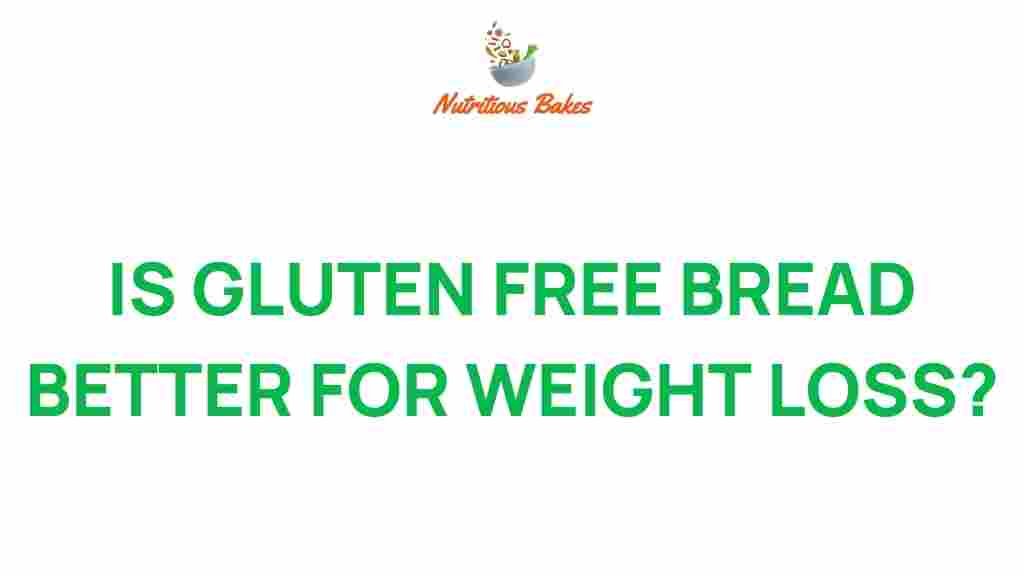The Weighty Question: Is Gluten-Free Bread a Better Choice for Weight Loss?
In recent years, gluten-free diets have gained immense popularity, not just among those with gluten sensitivity but also among individuals seeking to lose weight. But is gluten-free bread a better option for weight loss? This article will delve into the nutritional aspects of gluten-free bread, its impact on weight loss, and how it fits into a balanced diet. We will explore calories, carbs, food choices, and overall health to help you make informed decisions about your diet.
Understanding Gluten and Gluten Sensitivity
Gluten is a protein found in wheat, barley, and rye. For many, gluten is harmless, but for those with gluten sensitivity or celiac disease, consuming gluten can lead to serious health issues. Symptoms of gluten sensitivity include:
- Bloating
- Diarrhea
- Abdominal pain
- Fatigue
For individuals with gluten sensitivity, gluten-free bread is a necessary alternative. However, for those without gluten-related disorders, the benefits of gluten-free bread for weight loss are less clear.
The Nutritional Profile of Gluten-Free Bread
When considering gluten-free bread, it’s essential to look at its nutritional profile. Gluten-free bread is typically made from alternative flours such as:
- Rice flour
- Almond flour
- Coconut flour
- Chickpea flour
These alternative flours can vary significantly in their calorie and carbohydrate content compared to traditional wheat bread. Here’s a comparison:
| Type of Bread | Calories (per slice) | Carbs (per slice) |
|---|---|---|
| Whole Wheat Bread | 69 | 12g |
| Gluten-Free Bread | 90 | 15g |
As seen in the table, gluten-free bread often has more calories and carbs per slice than whole wheat bread. This discrepancy is crucial for those focused on weight loss.
Weight Loss: Gluten-Free Bread vs. Whole Grain Bread
When it comes to weight loss, the choice between gluten-free bread and whole grain bread can significantly impact your diet. Here are some key factors to consider:
- Caloric Content: As mentioned earlier, gluten-free bread may contain more calories, making it essential to monitor your intake.
- Fiber Content: Whole grain bread typically has a higher fiber content, which can enhance satiety and help control hunger.
- Nutritional Value: Whole grain bread is often richer in vitamins and minerals compared to gluten-free varieties, which may use refined starches.
Choosing between gluten-free bread and whole grain bread ultimately depends on your dietary needs and health goals. If you do not have gluten sensitivity, whole grain breads are generally more beneficial for weight loss.
Incorporating Gluten-Free Bread into Your Diet
If you have gluten sensitivity or choose to incorporate gluten-free bread into your diet, here are some tips to consider:
- Portion Control: Be mindful of the number of slices you consume, especially if gluten-free bread is higher in calories.
- Pair with Nutrient-Dense Foods: Combine gluten-free bread with healthy toppings like avocado, lean proteins, or vegetables to enhance nutrition.
- Read Labels: Always check the nutritional labels for calories, carbs, and added sugars in gluten-free bread.
Potential Downsides of Gluten-Free Bread
While gluten-free bread can be a tasty alternative for those with gluten sensitivity, there are some potential downsides:
- Higher Sugar Content: Some gluten-free breads may contain added sugars to enhance flavor, which can contribute to weight gain.
- Processed Ingredients: Many commercially available gluten-free breads are highly processed and may lack essential nutrients.
- Increased Caloric Intake: If gluten-free bread is consumed in place of healthier options, it may lead to an increase in overall calorie consumption.
Making Healthier Food Choices
For effective weight loss, it’s essential to make informed food choices. Here are some strategies to consider:
- Focus on Whole Foods: Prioritize whole, unprocessed foods such as fruits, vegetables, lean proteins, and healthy fats.
- Limit Processed Foods: Avoid processed snacks and foods, which often contain hidden sugars and unhealthy fats.
- Stay Hydrated: Drinking water can help control hunger and reduce unnecessary snacking.
- Plan Your Meals: Meal planning can help you make healthier choices and avoid the temptation of unhealthy options.
Step-by-Step Guide: Transitioning to a Gluten-Free Diet
If you decide to transition to a gluten-free diet, follow this step-by-step guide to ensure a smooth process:
- Educate Yourself: Learn about gluten-containing foods and identify suitable gluten-free alternatives.
- Clean Out Your Pantry: Remove gluten-containing items from your pantry to avoid temptation.
- Explore Gluten-Free Options: Experiment with different brands and types of gluten-free bread to find ones you enjoy.
- Consult a Nutritionist: If unsure, consider consulting a nutritionist to create a balanced gluten-free meal plan.
- Monitor Your Progress: Keep track of your weight loss and how you feel on a gluten-free diet.
Troubleshooting Tips for a Gluten-Free Diet
Transitioning to a gluten-free diet can come with challenges. Here are some tips to troubleshoot common issues:
- Digestive Issues: If you experience digestive discomfort, ensure you’re incorporating enough fiber from fruits and vegetables.
- Cravings for Bread: If you miss bread, try making your own gluten-free bread at home using gluten-free flour blends.
- Feeling Deprived: Incorporate a variety of gluten-free foods to prevent feelings of deprivation and boredom.
For more information on gluten sensitivity and dietary choices, you can visit this resource.
Conclusion
In summary, whether gluten-free bread is a better choice for weight loss depends largely on individual dietary needs and preferences. While gluten-free bread can be a suitable option for those with gluten sensitivity, it is often higher in calories and carbs than whole grain bread. For effective weight loss, focus on a balanced diet rich in whole foods, monitor your portion sizes, and make informed food choices. Ultimately, the key to successful weight loss lies in understanding your body’s needs and finding a diet that works for you.
For further reading on nutrition and healthy food choices, check out this informative article.
This article is in the category Diet and created by NutritiousBakes Team
